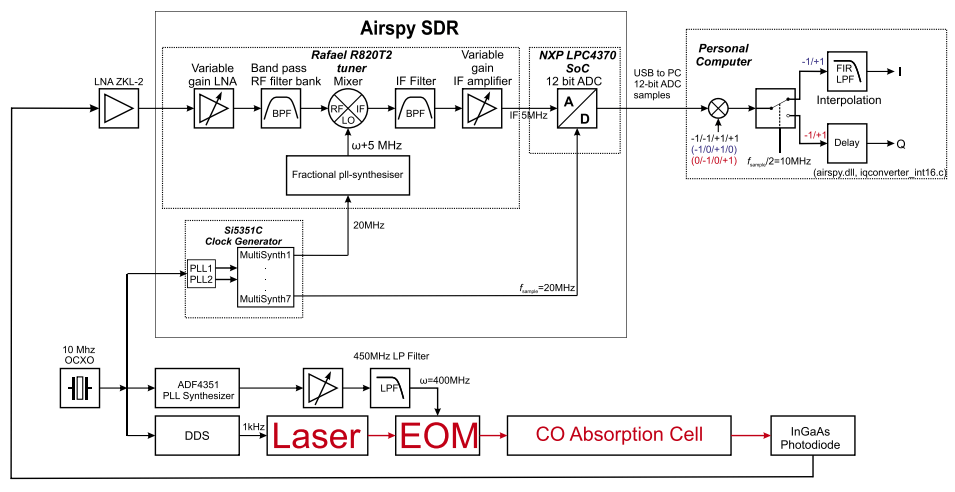Using an Airspy SDR for Optical FM Spectroscopy
Spectroscopy is the study of how electromagnetic radiation interacts with matter and it can be used to study the internal structure of matter. At the DLR Institute for Technical Physics in Stutgart Germany, Peter Mahnke has been using an Airspy software defined radio as a "lock-in amplifier" in a FM spectroscopy setup. A lock-in amplifier is simply a type of amplifier that can extract a signal from a known carrier in an extremely noisy environment.
In the experiment a laser is fiber optically coupled to an eletro-optic phase modulator, which modulates a 400 MHz FM signal onto the light. The light is then passed into a Carbon monoxide absorption cell with a photodiode used to take the spectroscopic measurements. The signal from the photodiode is passed into a LNA and then into the Airspy where the signal can then be processed on the PC.
The paper is very technical, but describes the setup, and how they characterized and calibrated the Airspy for their measurements. They conclude with the following:
A successful demonstration of a commercially available software defined radio as a lock-in amplifier was performed. For this purpose, the tuner front end and back end were characterized. The sensitivity and non-linearity of the receiver circuit was measured and analyzed. Acquisition of a CO spectral line was demonstrated using FM-spectroscopy with a repetition rate of 1 kHz. This proves the usability of an off-the-shelf SDR as a cheap but powerful lock-in amplifier by adding PLL driven frequency generators. The drawback of the arbitrary initial phase of the used phase locked loops can be either solved by software or hardware measures.
This experiment is somewhat similar to one we posted about earlier in the month where an RTL-SDR was used in an optical interferometer lab experiment.
